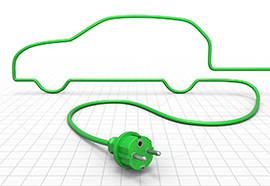Forecasting: Alternative-Fuel Vehicle Research
-
 Category: Automotive
Category: Automotive
Methods: Advanced Analytics, DecisionSimulator™, Market Segmentation
Summary
Since the costs of gasoline and diesel fuels are expected to increase over the long term, our client wished to project the potential consumer demand for several alternative-fuel technologies within five vehicle segments. Because the demand for alternative-fuel vehicles depends heavily on the form and availability of infrastructure to support the new fuels and the relative price at retail, a market simulation capability was required in order to produce a variety of forecasts with varying assumed market conditions.
Strategic Issues
Over the next few years, automobile manufacturers need to decide the type and extent of investment in alternative-fuel vehicles. Possible technologies explored in this study included battery electric, hybrid, and two other new technologies. Consumer acceptance and purchase of vehicles powered by these technologies will depend not only on the cost saving vs. traditional gasoline-powered vehicles but also on the availability and consumer acceptance of the infrastructure used for refueling. Many scenarios could be envisioned for the development of these factors over time. Also, consumer acceptance of new technologies may vary considerably across vehicle segments, such as sedan, SUV, and pickup truck. Finally, there may be regional variability in the development of infrastructure across the U.S. that would further challenge automotive manufacturers.
Research Objectives
The primary research objective was to forecast demand for the most promising types of alternative-fuel vehicles, within three geographic areas, for five vehicle segments, and under various assumptions about certain key drivers of market outcomes (in particular, cost savings and refueling infrastructure). Demand forecasts needed to be conditioned on particular levels for seven attributes:
- Vehicle driving range
- Length of time required to drive to a refueling station
- Length of time required to refuel
- Features of the refueling station
- Fuel cost savings vs. a gasoline vehicle
- Purchase price of vehicle
- Cargo space
Research Design and Methods
A choice modeling design was used. In an online survey, respondents made vehicle purchase choices in each of eight purchase scenarios, selected from a set of 64 total scenarios, which were optimally defined based on an experimental design. The experimental design presented several vehicles, described in terms of the fuel technology and combinations of test levels for the seven tested attributes.
The respondent choices were combined with the attribute variables to build a choice model data set, and a Hierarchical Bayes method was used to estimate respondent utilities for each level of vehicle or refueling station attribute. Finally, the respondent utilities were used to construct a market simulator, which was calibrated to deliver a reasonable market forecast.
The resulting DecisionSimulator™ was used to run hundreds of market simulations to inform our client’s strategic decisions.
Results
The research revealed the relative sensitivity of future demand for alternative-fuel vehicles to cost savings (vs. gasoline vehicles) and vehicle and refueling station attributes, as well as the vehicle price. The DecisionSimulator™ identified which of the competing technologies to use in a future vehicle and determined which of the five vehicle segments offered the greatest sales potential for such a vehicle. The order of geographic deployment was also determined based on the research.
Automotive Marketing Research
If you would like more information on conducting Automotive Research, please contact Heather Kluter, Vice President (hkluter@decisionanalyst.com), or Bonnie Janzen, Executive Vice President (bjanzen@decisionanalyst.com), or call 1-800-ANALYSIS (262-5974) or 1-817-640-6166.
Library Sections
Related Services
Case Histories
White Papers
- Business Segmentation: Emerging Approaches to More Meaningful Clusters
- Global Segmentation – Dealing with Cross-Cultural Differences in Survey Rating Scale Usage
- What is Market Segmentation? From Demographic to Time to Psychographic Segmentation: A Review Market Segmentation Strategies by Jerry W. Thomas

